-
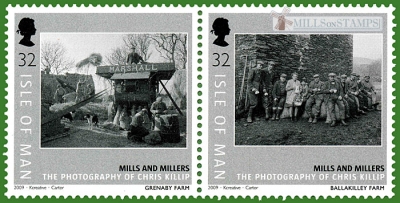
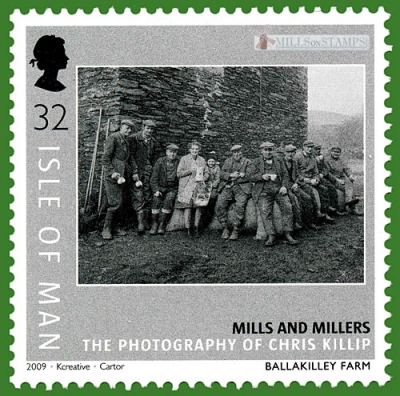
Perforation type: 13 ¼x13 ¼
Subject:
32 pence. Workers on a background of a mill (probably) from farm Ballakilley
-
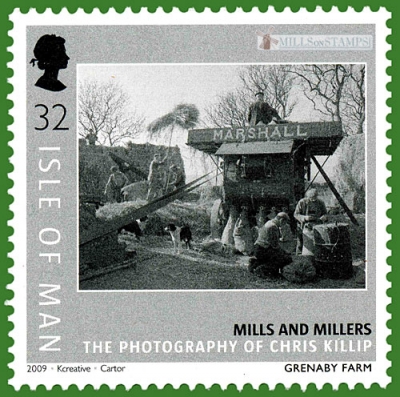
Subject:
32 pence. Workers during crushing hay on a mechanical mill from farm Grenaby
-
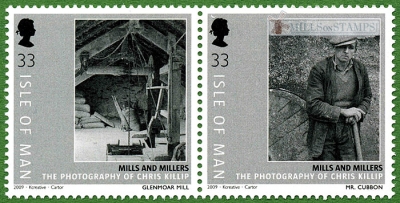
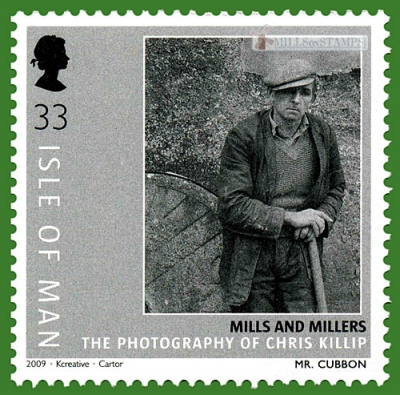
Subject:
33 pence. Mr. Cubbon on a background of a wall and a millstone
-
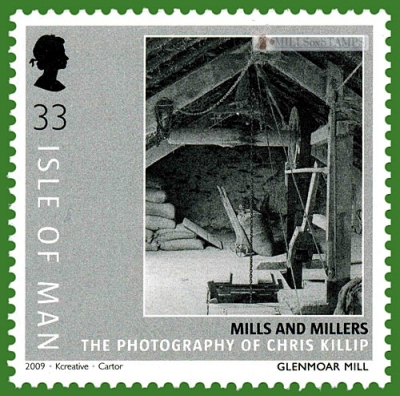
Subject:
33 pence. An interior of Glenmoar mill
-
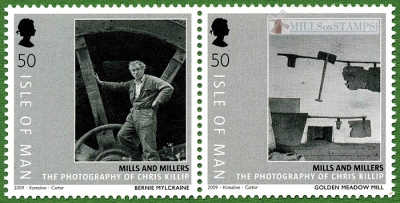
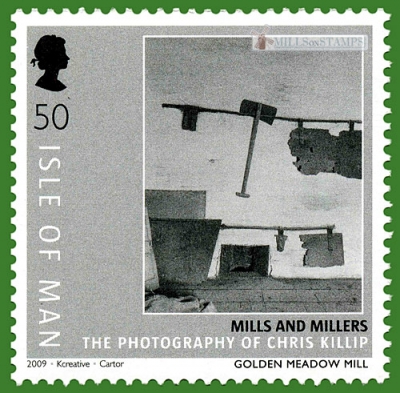
Subject:
50 pence. An interior of Golden Meadow mill
-
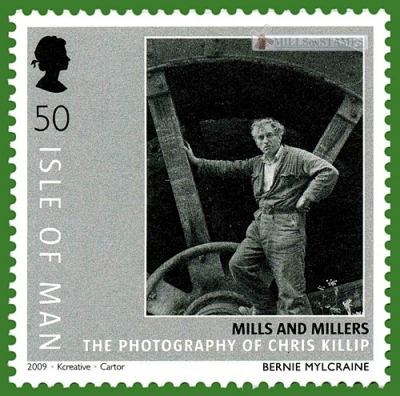
Subject:
50 pence. Bernie Mylcraine at a wheel of a watermill
-
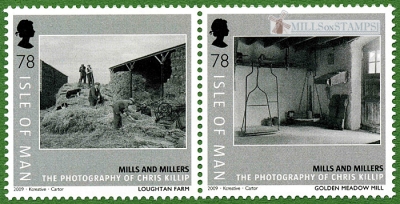
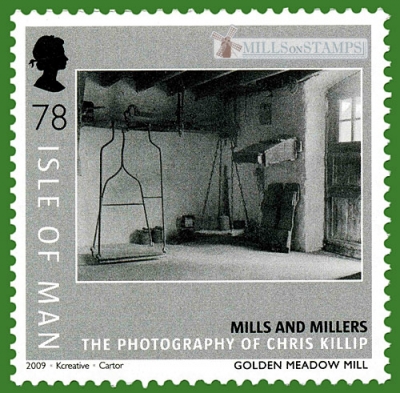
Subject:
78 pence. An interior of Golden Meadow mill
-
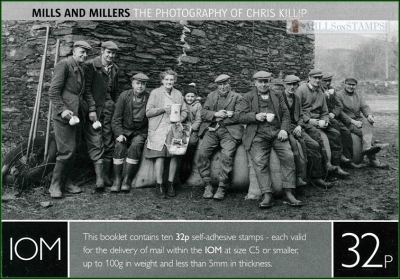
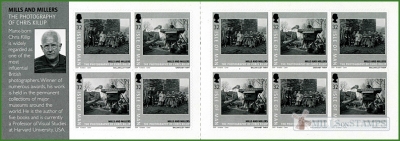
Perforation type: 12 ¼x12 ¼
Subject:
The booklet contains 10 stamps of 32 pence.
Plots on stamps like the plots of first two stamps of a seriesSize (of sheet, booklet) mm: 237x82
-
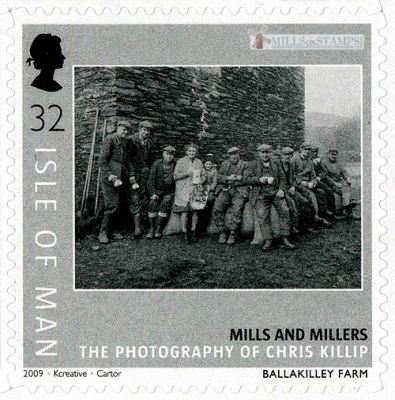
Subject:
32 pence. Workers on a background of a mill from farm Ballakilley
-
2009-1bklt-1frgm-logo.jpg)
Subject:
32 pence. Workers during crushing hay on a mechanical mill from farm Grenaby
-
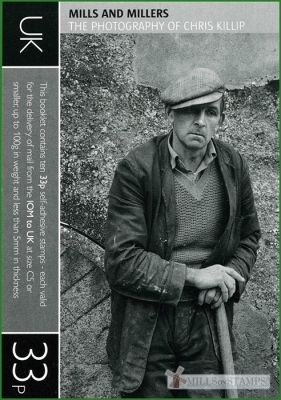
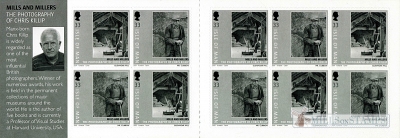
Perforation type: 12 ¼x12 ¼
Subject:
The booklet contains 10 stamps of 33 pence.
Plots on stamps like the plots of first two stamps of a seriesSize (of sheet, booklet) mm: 237x82
-
2009-2bklt-2frgm-logo.jpg)
Subject:
33 pence. Mr. Cubbon on a background of a wall and a millstone
-
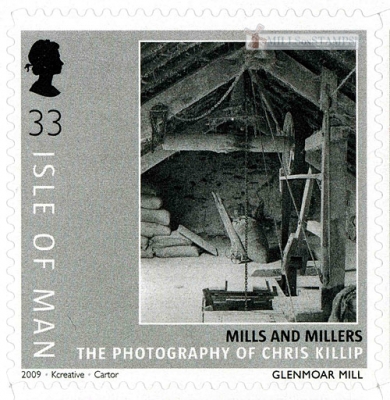
Subject:
33 pence. An interior of Glenmoar mill
Additional:
*Chris Killip, born in 1946 in the Isle of Man, is widely regarded as one of the most influential photographers to have come out of Great Britain. A winner of numerous awards including the prestigious Henri Cartier-Bresson Award, his work is held in the permanent collections of major museums around the world.
These include the Museum of Modern Art, New York; Stedelijk Museum, Amsterdam; Folkwang Museum, Essen; Bibliotheque National, Paris; and the Victoria & Albert Museum, London.
He is the author of five books: The Isle of Man and In Flagrante, with texts by John Berger; Chris Killip 55, text by Gerry Badger; and Pirelli Work, text by Clive Dilnot. Here Comes Everybody, a book of his Irish photographs, is published this year by Thames and Hudson. Errata Editions of New York have also just published a facsimile study of In Flagrante in the launch edition of their new series on the world's most influential photography books.
In 2008 his photographs were exhibited at the Tate Modern, London; Haus de Kunst, Munich; Andulucia Contemporary Art Center Seville and Rose Gallery, Santa Monica. Chris Killip has lived in the USA since 1991, where he is a Professor of Visual Studies at Harvard University.
Chris tells about itself and his hobby of life:
"My first encounter with photography was as a seventeen year old in the Isle of Man in 1964 when I left my job as a trainee hotel manager at the Castle Mona Hotel to become "the beach photographer" for Keig's in Port Erin. With the money I saved I moved to London and tried to get a job as a photographer's assistant. I made a list of the hundred best photographers and, starting at the bottom, I began knocking on studio doors. I had worked my way right up that list, was running out of money and I still hadn't found a job, when I knocked on my ninety-sixth door in Tite Street, Chelsea.
The woman who answered the door recognized my Manx accent and asked me in. it turned out that her former boyfriend from college days was Howard Grey, whose father had the photographic studio "Joe's Bar" in Strand Street. She then persuaded her boss, the photographer Adrian Flowers, to hire me. It was an amazingly fortuitous start to my career in photography. At the end of my first week Adrian said to me, "I believe that you know a thing or two about catering. Why don't you organize the food and drink for a party we will have here tonight for friends who just got engaged." (My father was a publican. His first pub was the Highlander Inn, where I was born, then the White House in, where I grew up, and his last pub was the Bowling Green in Douglas). At seven o'clock that evening the studio doors burst open and in came Daniel Barenboim and Jacqueline Du Pre. It was quite a party and I knew how lucky I was to be a part of it.
The subject, for the start of my own photography in 1969, was the remaining water mills in the Isle of Man. Once there had been fifty-nine of them, but over the years they had been shut down and by then there were only three left operating commercially: the Kella Mill at Sulby, Glenmoar Mill near Laurel Bank and the Golden Meadow Mill in Castletown. Traditional milling methods are labor intensive and, by modern standards, uneconomical.The millers’ trade and the multifarious knowledge needed to adjust the stones, measure the flow of water and obtain the required flour qualities was passed on for generations from father to son.
My father was the adopted son of Lewis Killip, who had the small water mill just below the wheel at Laxey (now Manx Engineering Ltd). My intention in 1970 was to make a book about the water mills and a portfolio of these images was published in the January 1971 issue of Camera of Switzerland I had also by then become interested in the last of the thrashing mills. Some farms still had their own thrashing mill, those without were serviced by the mill belonging to Tom Kinnish. He still travelled, along with his right hand man Harry Hampton, to the farms in need of a thrashing mill. My photographic work on the Isle of Man went on to become a bigger project and was eventually published as The Isle of Man: A Book about the Manx in 1980.
I revisited these photographs last year when I learnt that my friends, Nigel and Nicky Kermode, of Greens restaurant, had bought the Tynwald restaurant in St. Johns and were planning to renovate and reopen as a bakery and cafe. I scanned the old negatives and made a set of prints for display in their new cafe. I also made a small, limited edition book for myself - a project that gave me a great deal of pleasure when thinking back to the time of taking the pictures. It is now nearly forty years ago and in the intervening years farming and values in the Isle of Man have dramatically changed."
Mills and Millers. Photography of Chris Killip
Isle of Man 2009.04.01
In issue: Stamp(s): 8 Booklet(s): 2
Issued in: sheets by pairs of 50 (5*10) stamps and on self-adhesive booklets (1st and 2nd pairs of series) of 10 (5*2) stamps